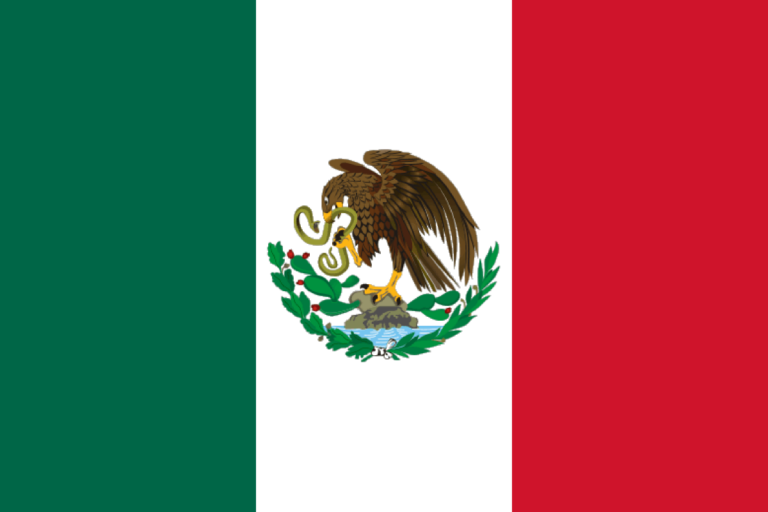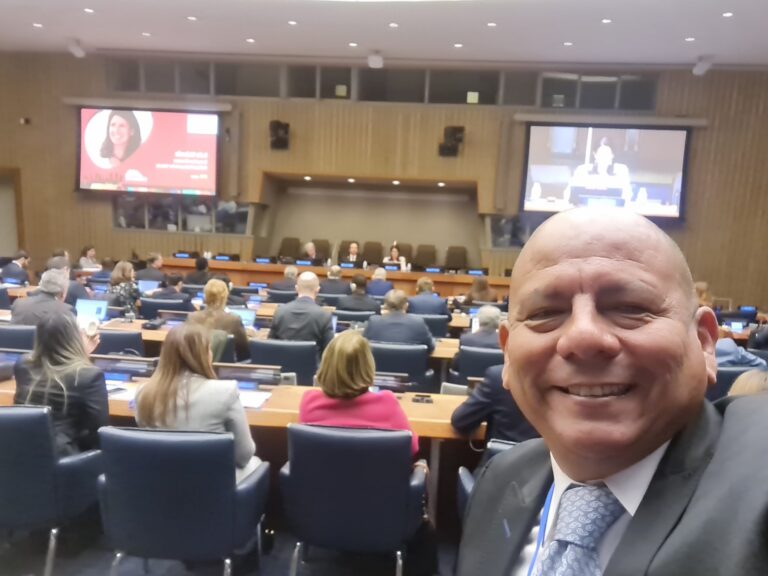Over 20 years ago in November 1981, I was appointed Chief Executive Office of the Commission on Population — the Philippine Government’s prime mover of what it unabashedly but accurately called the national population control program. We then waged an all-fronts propaganda campaign, under severe pressure from our international funding agencies, to pronounce a national policy setting a “small family size norm” at three children. The current martial law regime was outwardly hesitant, apparently to prevent the Catholic Bishops’ open resistance. In March of 1982, the government finally issued the call to “stop at three.” which was roundly cheered by the more than 50,000 full-time population workers and volunteers deployed in over 70 Philippine provinces and funded by USAID.
There was a sense of discomfort within me; I had four children, and my wife had hoped for more, despite her four Cesarean sections. In 1974, the year of the First World Population Conference in Bucharest and my wife Barbara’s fourth pregnancy, our doctor counseled us to have her undergo a tubal ligation, in order to prevent another surgical delivery. While Barbara was on the operating table, I agreed to the surgery. We had our fourth and last child, a beautiful girl, in 1974. Eight years later, as head of the country’s population control agency, I thought to myself, “How can I ask our people to have only three children, when I myself have four?”
A Loss and an Explanation
The terrible answer came swiftly; a month later, while she was visiting my mother-in-law, my elder 10-year-old daughter Christine was murdered. A man had broken into her grandmother’s room to rape the household help who slept with her. My daughter woke up; and to silence her, the man hit her on the head with a lead pipe. I now had only three children. My inner discomfort and doubt about having more than three children invoked the destructive forces of the culture of death — a culture and spirit spawned by mankind’s urge to engineer life at any cost.
Population Management Begins
In September of 1972, before the end of his second and last term of office as President, the late Ferdinand Marcos declared martial law “to save the Republic and create a New Society.” Within a year after declaring martial law, Marcos called for a Constitutional Convention in order to legitimize his regime — the philosophical oxymoron that he referred to as “constitutional authoritarianism. It is vital to understand that one of the fundamental principles explicitly stated in the Preamble of the 1973 Constitution was to “manage population levels and growth rates.” At a state dinner in Manila, then-Vice President George Bush toasted the dictator Marcos and showed America’s hand in stabilizing the Marcos dictatorship. In hindsight, it now is perfectly understandable that the United States government would in the very least acquiesce to the perpetuation of an authoritarian regime in the Philippines. In 1974 then National Security Adviser Henry Kissinger authored National Security Study Memorandum 200 mandating the creation and funding of massive population control programs in 13 countries identified as having high population levels and growth rates. The Philippines was one of these 13 countries.
In the second term of Ferdinand Marcos, a committee was formed within the Department of Health to study the implications of population growth and submit recommendations. Soon after, Presidential Decree #79 organized the Commission on Population under the Office of the President.
In the early days of POPCOM, even the Catholic Church was represented on its board, until the Catholic Bishops’ Conference of the Philippines decided to distance itself from the Government’s gradual involvement in population control by withdrawing its representation on the Board of Trustees.
POPCOM was to quarterback the flow of funds from three principal funding agencies: the World Bank, the United Nations Fund for Population Activities and the United States Agency for International Development. Later, the Asian Development Bank, for whose regional projects in Indonesia, Bangladesh and Nigeria, I served as consultant on population, became a significant player. A National Family Planning Office was established in the Department of Health. Two major private institutions were created to support the government program: the University of the Philippines Population Institute and the Population Center Foundation. As the program moved along, bilateral funding from Japan, Australia, Canada and a few European countries, and project funding from private agencies, supplemented the population war chest,
Reducing the Numbers
The Commission evolved to be a mini-cabinet formed among Trustees representing the major government players in population control: health, labor, local governments, finance, social welfare and economic development. Its mission was clearly to reduce the growth rate and level of population to what it believed to be manageable, from the current rate of between 2.5% and 3.0%, and from its projected high level of 80 million people in the year 2000, to what was later on defined as conducive to “sustainable development.” This level and rate were determined by external agencies. To achieve this, the government was to actively promote modern family planning methods.
The Philippine national population program has proclaimed two cornerstone principles: the “principle of no-abortion” and the “principle of non-coercion.” The Philippine Constitution has never legalized the termination of the life of a living infant. However, a serious debate has centered on the question: At what moment does the fertilized egg become a viable fetus? When does contraception degenerate to abortion? This issue is a critical one, because a number of family planning methods have been identified as abortifacient. The principle of non-coercion is more complex. It rests on what the program refers to as its “cafeteria approach,” by which it claims to offer the entire range of contraceptive methods and devices to the potential “acceptor.” This process is to be conducted under the guidance of a trained doctor or nurse. The acceptor is supposedly empowered to make an informed choice. This approach is set within the ideal scenario of a clinic, with ample information on the pros and cons of each family planning method. Yet this scenario is far from the realities of the field. At least three problems challenge the actual validity of the claim of non-coercion.
First, the Philippine health system [and I am certain also the health systems of all Third World countries) does not effectively reach more than 40% of the total population. Scarcity of resources, limitations on public utilities and infrastructure, unavailability of trained medical personnel, and often sheer incompetence, all conspire to limit Rural Health Centers to the poblaciones, or the municipality’s central settlements. I have witnessed a brand-new, fully equipped health center constructed on a reclaimed swamp, with no water and power, and therefore with absolutely no way of moving into operational status.
Facts Swept Under the Rug
The population control program’s response to this challenge was creative. First, it established Regional Offices that managed Provincial Population Offices staffed with highly trained Full-Time Outreach Workers (FTOWs). Provincial Population Offices then organized itinerant motivation and referral teams in coordination with Municipal Health Officers. These itinerant teams then panned to the interior countryside, coastal villages and island communities, and isolated upland settlements, and brought with them contraceptives for distribution to new acceptors. For practical reasons, the itinerant teams could only bring with them the readily available methods and devices that could be dispensed within their limited visiting time. These were virtually limited to contraceptive pills and intra-uterine devices.
And they installed within each basic social unit (the “barangay”) one volunteer who would become their focal source for re-supply; they called the volunteer “Barangay Service Point Officer? The BSPOS were covered with insurance benefits and “training” allowances and perks, and became the custodians of the program’s “income-generating projects” or IGPs, which included goat, swine and cattle dispersal. The itinerant team members themselves were granted compensation for travel away from their workstations as well as for overtime and hardship. So an elaborate system of incentives for workers and volunteers virtually renders the so-called “cafeteria approach” mythical. But what was swept under the rug is the fact that contraceptive pills and IUDS are proven abortifacients.
Sterilization-Cost Effective
Second, the menacing presence of male vasectomy and female tubal ligation in the Philippine population program has spawned a subsystem of indirect coercion that capitalizes on the vulnerability of people in poverty-stricken countries.
Declared legal by the Supreme Court during the martial law regime, sterilization has become a major program strategy for population control. It is culturally shocking that this permanent and irreversible surgical process was hardly resisted by Filipinos, considering that it was a major form of genocide in Europe and the Middle East, and the major cause of riots in India as a violation of their religious beliefs.
The population control program regards sterilization as the most cost-effective method. But the cultural and religious stigma on sterilization, particularly male vasectomy, made it very difficult to market. So the program had to spend millions of pesos on sterilization propaganda. Our recently expelled president, Joseph Estrada, prominently advocated vasectomy when he was still Senator. The sting of this physical mutilation was very possibly snipped out by the misleading reference to it as “voluntary surgical sterilization.” The dangers, such as peritonitis and psychological depression, were hardly mentioned, and usually ignored when they arose — referred to a clerk or bureaucrat to languish slowly into oblivion. It was promoted softly as a minor and painless surgery.
I received a report that the present budget for male vasectomy alone is Php 50 million. The ideal administration of surgical sterilization is, as in any surgery, in a well-equipped hospital with sanitized facilities. But again, field realities prodded the program to improvise and compromise.
The same itinerant teams would round up volunteer patients from their assigned outreach areas, gather as many as 100 together in any nearby clinic where they would queue for their turn on makeshift surgical beds lined up side by side 10 to 15 astride. A doctor and nurse would then conduct the mass surgery and finish them in a weekend. But besides the doctor’s fees of about Php 500 per patient subsidized by the program, user incentives are the main attraction of the surgical method. The sterilized patients were granted an average of 5-days of no-work compensation (even if they were unemployed anyway), free antibiotics for the convalescing period, and transportation allowances, In a poverty-stricken community, this meant an appealing proposition.
Sterilization for Young and Old
I received a report that in an African country, the incidence of both husband and wife volunteering for sterilization was not uncommon. And in a South Asian country, patients under 15 years old and over 65 years old would falsify their consent forms to qualify for sterilization incentives. Yet the administering staff would usually look the other way, as these misrepresentations helped their efforts to meet sterilization targets that would justify their budgets.
Finally, the “cafeteria approach” does not include all the methods of fertility regulation. Only recently (1995) did the population control program begin to include a specific natural family planning process (NFP), as it strove to appease the Catholic Church and co-opt its allied agencies. The favored method of the Pro-life movement, the Billings Ovulation is taught within the context of a matrimonial relationship and not merely as training on physiological manipulation. This incorporation of natural family planning is a bait that POPCOM has tried to lure the Church into biting from the very beginning of the program. It is still trying, to this day. The population control program has explicitly articulated a deliberate strategy (“escalation strategy”), which aims to lead acceptors from the LEMs (or less effective methods, which includes NFP, rhythm, condoms and low-dose pills)) to the MEMS (or more effective methods).
Choices Changes Thinking
These are the ground movements that expose the insincerity of the population control program’s claim of non-coercion. But far more distressing are the distance artillery and air assault operations. The long-range trends in finance, legislation, education, and propaganda are far more lethal than the ground movements as they redefine what the anti-life movement can do, and how society thinks and makes choices in the future. The steward of measures to sustain and intensify the population control program appears to be the International Futures Group. On a plane from the U.S., I met a highly respected Filipino-Chinese businessman who had made public statements that the over 80% of Filipinos now live under the poverty line. I struck a conversation with him, and quickly realized that he was placing the blame for the massive poverty on the Catholic Church, who, he said, was thwarting the population control program with its outdated and anti-developmental beliefs. Later that week, I discovered that the distinguished businessman was the Chair of the Philippine Futures Group. There was a rumor twenty years ago that the financing for population control would taper off, particularly because the Philippine program was seen as a failure. This never happened. Population funding merely moved away from the central repository (POPCOM) towards the points of service delivery: the Health and Education Departments, and the local governments.
Anti-Life Conspiracy
My sense is that the Philippines is a principal target of the anti-life conspiracy. Some of the reasons are: that its surrender to the population control movement, specifically to the legalization of abortion, will be a moral victory over the Catholic Church; that a triumph in the Philippines would incontestably prove the soundness of population control.
The major players in global population control remain the same. The thrust of population finance has expanded to address the complementary issues of population control, such as AIDS education, adolescent fertility, sex education, reproductive health — all in the agenda proposed by the 1994 World Population Conference in Cairo and the 1995 World Conference on Women in Beijing. Population control money is directed at surrounding the acceptor with messages and institutions that reshape their values, limit their freedom of choice, and lead their preferences toward the more effective methods, particularly abortion. The proposed budget for the Philippine population control program for the next five years is five billion pesos (or just under 100 million U.S. dollars).
Terminologies and statements contained in the two U.N. World Conferences have then been incorporated into new and recurrent legislation, attempting to push forward the global depopulation goals. If passed, these laws will then invoke nuances contained in the world conference statements, so that definitions and interpretations of these statements will be forced upon our interpretations of the law. An omnibus population bill has been proposed and amended at least three times, proposing to use virtually the entire government and its departments in population control. Other bills seek the legalization of abortion for specific causes, advocate divorce and same sex marriage. These moves in legislation are coordinated by legislators co-opted by the program: the Philippine Legislators Committee on Population and Development (PLCPD).
A New Breed of Youth
A new breed of youth is now being formed in the classrooms by the Adolescent Health and Youth Development Programme adopted by the Department of Education, Culture and Sports. The program was launched in 1995, and integrates a value-free approach to sex education in schools. The subtle thrust is to desensitize children and youth to the intimacy and sacredness of sex. The program tends to reduce the youth’s appreciation of sex from an expression of love within the context of marriage, to merely a practical understanding of it as a function of the body that can be manipulated and used to accommodate pleasure-seeking.
The population control program has recently grown much more visible and vocal in the media than it has ever been. Condoms are shamelessly advertised in the broadcast and other media, Celebrities and programs openly advocate sexual freedom. There are no signs of deceleration, even in the face of decreasing fertility rates.
Help us — with your information, with your influence and with your prayers of intercession — to continue our valiant battle against this modern persecution, this modern silent holocaust against human life.
Antonio (Sonny) de los Reyes is former chief executive director of the Philippine Commission on Population, and the chairman of the Council on the Laity.










